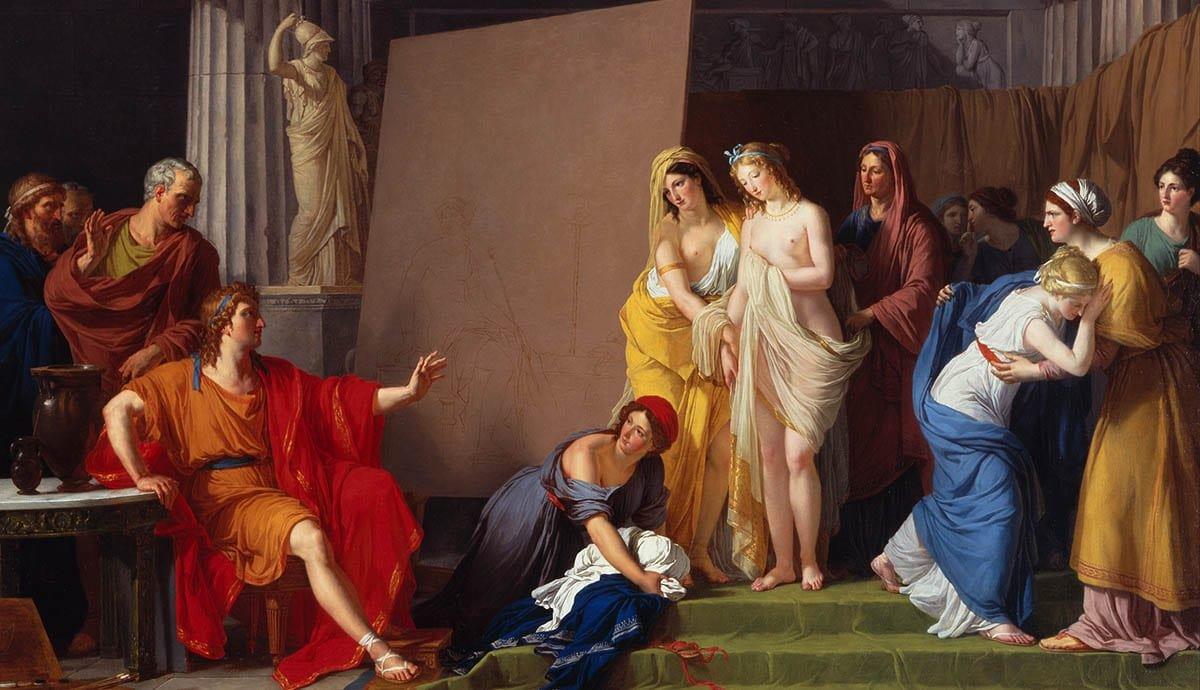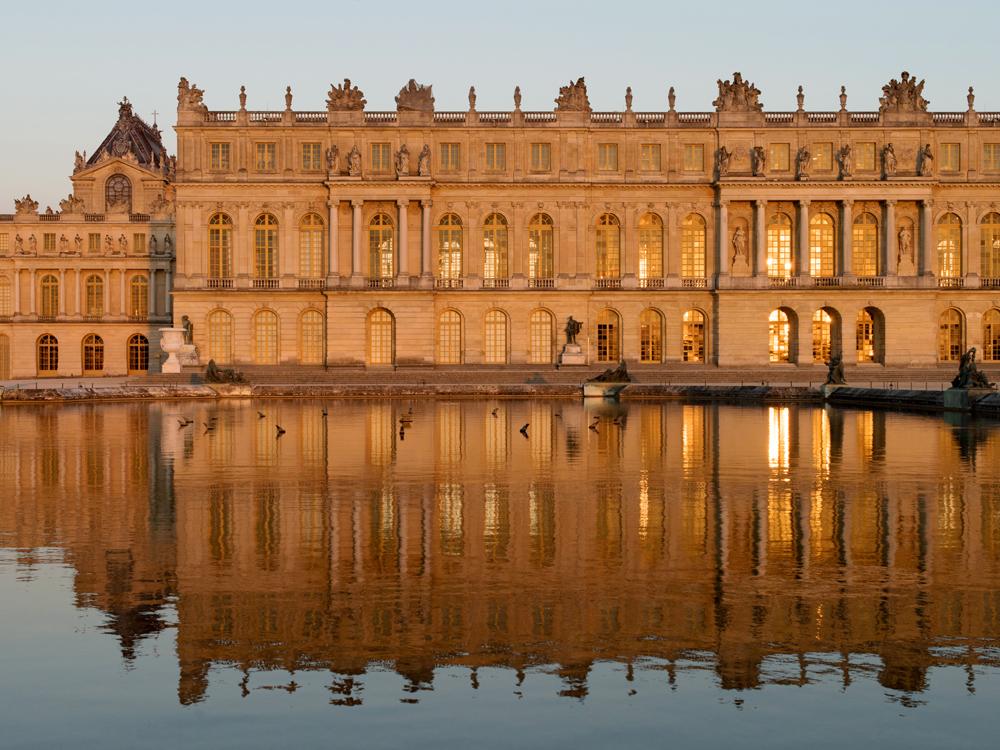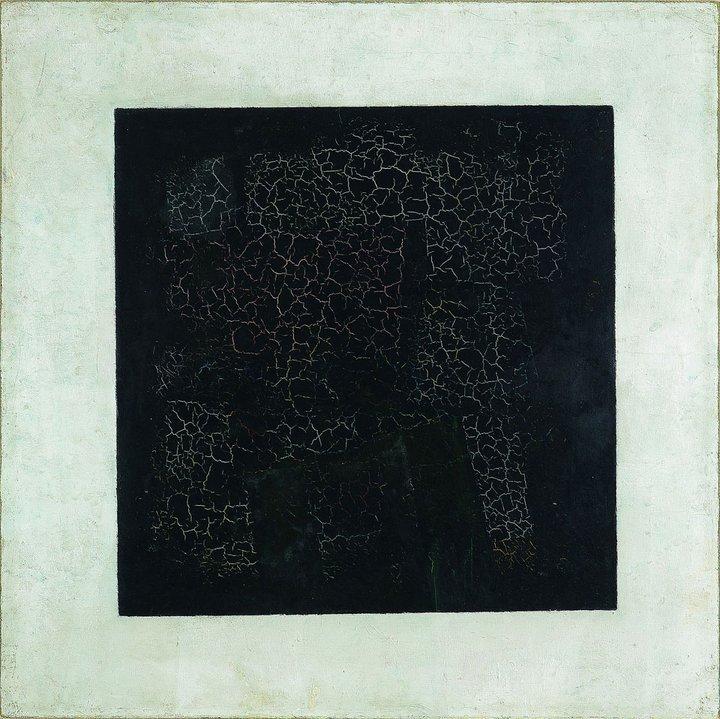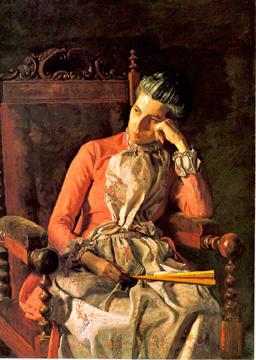Mimesis
The ancient Greeks approached art as a form of mimesis. They were convinced that the major objective of creativity is to imitate or copy reality. Such a definition may prompt artists to develop their skills in order to convey shadows, light, and other peculiarities precisely. However, it can be noted that art involves more aspects than only copying something. A prominent example of the art of this historical period is the works of Zeuxis. He was a Greek painter, living in the 5th century BC. He was famous for painting extremely true-to-life. His achievement implied creating a volumetric illusion, managing lights, and shadows. One of his genius artworks is Helen, who he considered the most beautiful woman in the world and depicted extremely true-to-life. In Picture 1, he is depicted in the process of choosing a model for this artwork. Unfortunately, none of the pictures of this period have been preserved till nowadays.

Communication
Another approach to defining art regards this subject as communication of feeling, and it is based on the proposal of Russian author and art theorist of the 19th century, Leo Tolstoy. The advantage of this approach implies highlighting the unique meaning of each artwork and paying attention to the creator’s inner world. However, occasionally, the artists do not convey their feelings clearly in their creativity. Therefore, following this logic, in case work does not communicate a feeling, it cannot be regarded as art. The example of creation, which is aimed to communicate, may be Leo Tolstoy’s work ‘Anna Karenina’, which is aimed to transmit his views on love and family. The episode of its film adaptation is depicted in Picture 2.

Significant Form
In the 20th century, an art critic Clive Bell proposed a different view on art, which implies receiving aesthetic pleasure. Although this definition prompts masters to improve their skills, it is not objective. People have different opinions on beauty, and therefore, it is impossible to give an assessment of an artwork. An illustration of Clive Bell’s view could be the Palace of Versailles, which is the major royal residence in France, illustrated in Picture 3. It is connected with numerous meaningful events in the history of the country. It was created by Louis Le Vau and Jules Hardouin-Mansart, who were prominent artists of the 17th century and made it in baroque style. It includes symmetric lines and gorgeous decorations, which look aesthetic.

Artworld
A more modern definition of the differentiating feature of art is the fact that it was created on behalf of the artwork. It is advanced by George Dickie and Arthur Danto, who identify artworld as a complex field of force. This approach has no limits for the masters’ imagination, though it does not outline the specifics of this field and predominantly regards the power to define the art. An example of this opinion could be a painting of Kazimir Malevich, a Russian artist of the 19th century, ‘Black Square’, shown in Picture 4. In general, whether this work is a piece of art is a matter of hot debates. However, the painting is definitely made on behalf of the art world.

Mind into the World
The last approach identifies art as a reflection of people’s experience in the world and the expression of particular ideas from the mind. The major advantage of this definition is the fact that it implies a comprehensive analysis of the artwork and the personality of its creator. However, it may minimize the significance of other artworks, which do not include an in-depth meaning. An example of this view on art could be a portrait of Miss Van Buren, painted by Thomas Eakins, which is presented in Picture 5. An American artist of the 19th century, proposed a new view on this genre in this picture, attempting to transmit sadness and sorrowfulness via portraits.

Works Cited
“An American Realist: Thomas Eakins.” Radford, Web.
Chaliakopoulos, Antonis. “Zeuxis: The Ancient Greek Painter & Master of Still Life.” The Collector, Web.
Meek, James. “Rereading Anna Karenina by Leo Tolstoy.” The Guardian, 2012. Web.
“The Palace.” Chateau Versailles, 2021. Web.
“Five ways to look at Malevich’s Black Square.” Tate, Web.